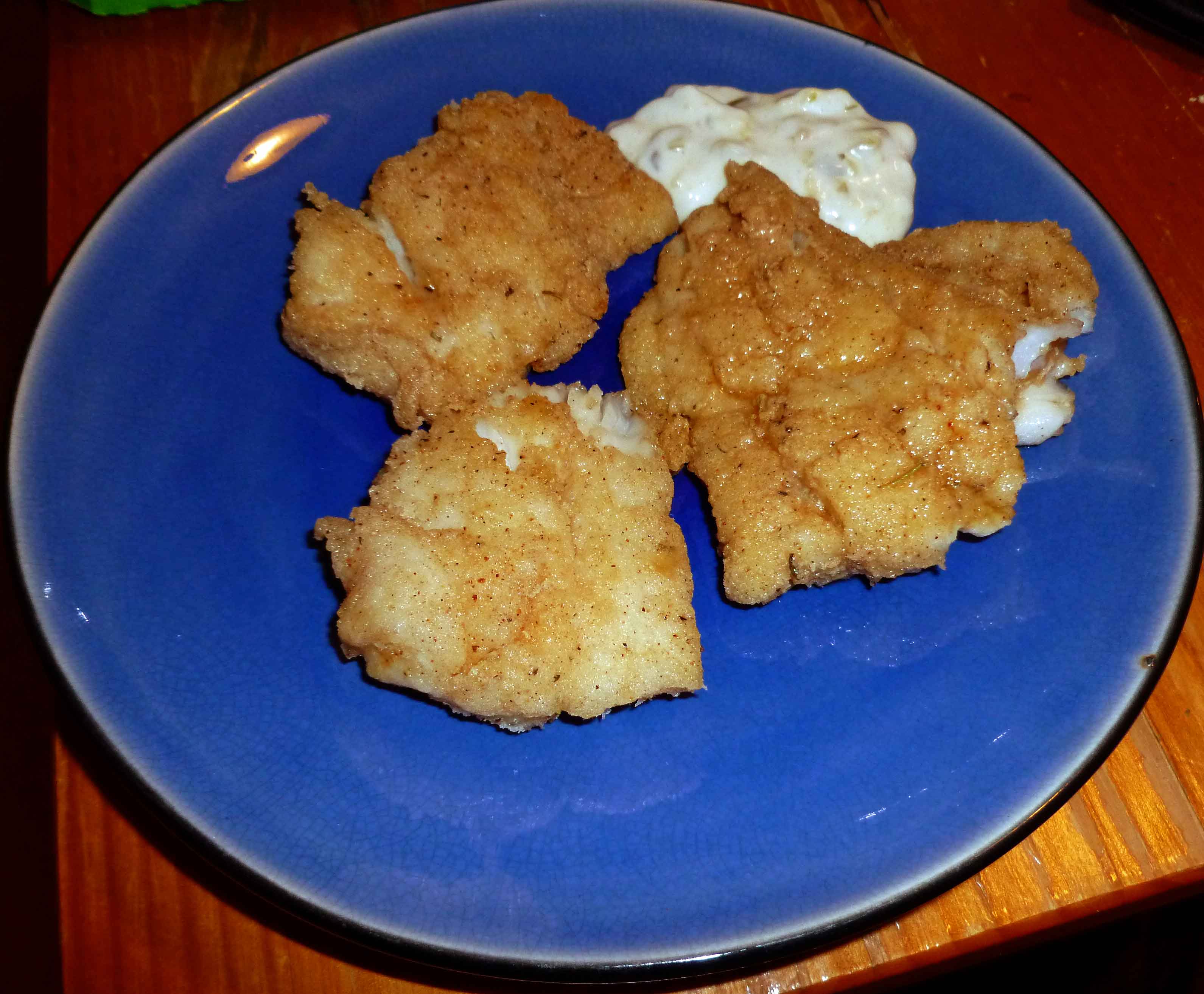
My apologies in advance to those of you with fish and shellfish allergies, but I’m from Maine originally, and I love, love seafood. Although I have three confirmed shellfish allergies (crab, scallops, and clams), and one additional positive scratch test in the elimination/challenge confirmation process (lobster, I better not be allergic), I only appear to be anaphylactic with respect to soft-shell crab. I still avoid the other confirmed seafood allergies, because you never know (past reactions don’t predict future reactions) and because the symptoms I do get are bad enough, but I’m stubborn enough to continue eating fish or shellfish that aren’t on my confirmed or positive scratch test list. However, if a medical professional or your symptoms have made it clear that you can’t eat any shellfish or fish, don’t follow my lead because I can be an idiot when it comes to doing what I’m supposed to do for my own personal health, as we’ve previously established on this blog.
With that said, let’s move on to the dish of the day. I’m a shellfish girl primarily, meaning I like(d) crabs, scallops, clams, shrimp, and lobster. For me seafood really doesn’t mean fish, but I don’t mind a good piece of haddock. Haddock has to be cooked right or you get this dried out, tasteless piece of mushy cardboard. Since most of my shellfish favs are off limits these days, and the only way I can have haddock cooked at a restaurant is broiled with some lemon (since I’m allergic to dairy, wheat, and eggs) which tends to result in cardboard, I started buying some and cooking it at home. Haddock is also a standard offering in most fish departments in New England grocery stores.
Haddock can be a tricky thing to cook because it’s really easy to overcook, and over-cooked haddock is, as stated above, a dried-out piece of mushy cardboard. I’ll do my best to explain, but it’s sort of a continuing learning process/practice makes perfect kind of thing.
Pan-Fried Haddock
Serves 4 adults
- 2 pounds of fresh haddock (you can get previously frozen, but it won’t stay together as well and may fall apart as you’re frying it)
- 1 cup of whole grain gluten-free flour mix (see recipe below or use what you like that you have already, or if you can have wheat this works with all-purpose flour as well, as I used to make this before the wheat thing)
- spice mixture for flour (see below)
- 2 Tablespoons of canola oil (or other oil safe for you and suitable for frying)
- Canola oil (or other oil safe for you and suitable for frying), enough to fill the bottom of your skillet to the depth of a quarter of an inch
Whole Grain Gluten-Free Flour Mix
This makes several cups of a whole grain gluten-free flour mix, but you only need a cup for this recipe. If you want, save it for another use, or cut back the amounts proportionately so that you make less. Place the following ingredients in a large bowl and whisk them together thoroughly. Take out one cup for the recipe, and put the rest into an airtight container to store to use for anything that calls for gluten-free flour.
- 100 grams of millet flour
- 125 grams of white sorghum flour
- 125 grams of oat flour
- 75 grams of sweet or glutinous rice flour
- 75 grams of tapioca starch
Spice Mixture for flour
Mix the following ingredients in a little bowl:
- 1/2 teaspoon of salt
- 1/8 teaspoon of paprika
- 1/8 teaspoon of ground chipotle pepper
- 1/8 teaspoon of ground black pepper
- 1/8 teaspoon of rosemary (you might want to crunch it up into smaller pieces)
- 1/8 teaspoon of cayenne pepper
- 1/8 teaspoon of garlic
- 1/8 teaspoon of thyme
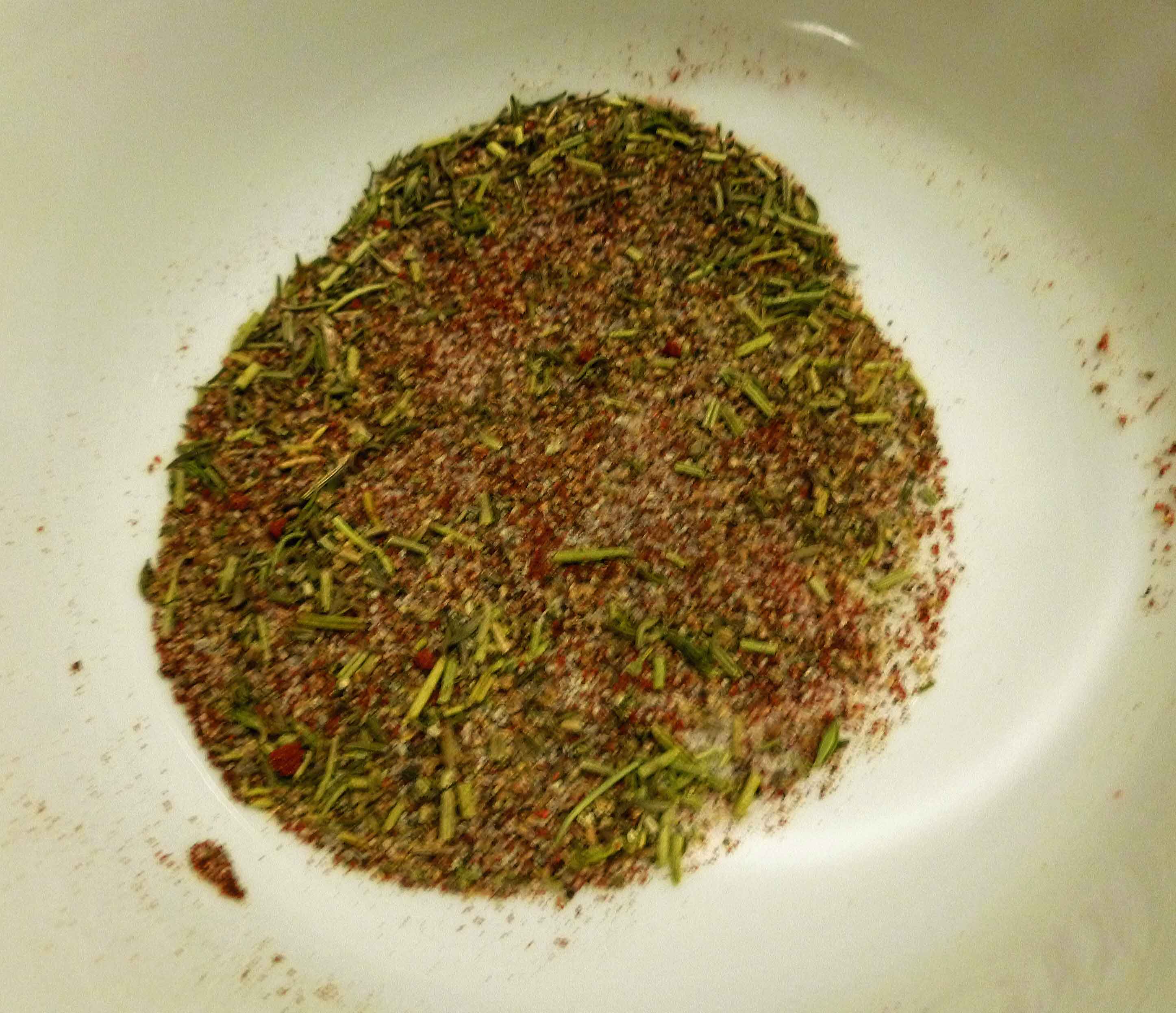
Take a large gallon ziploc bag, or a large bowl and mix the cup of whole grain gluten free flour and the spice mixture together. I use a ziploc bag because I can just seal and shake after putting the fish in it without having to handle the fish (I use tongs) or get my hands all covered in flour. Put the bag or the bowl aside for now.
Put your skillet on the burned and pour enough oil in it so that there is about a quarter of an inch of oil in the bottom. If you use a thick pan like my cast iron skillet and it’ll take a while to heat up, turn the heat on now to medium (about 5 or 6 on the dial).
Take your haddock fillets, and cut them into pieces about 3-4 inches long. I find that pan-frying a whole fillet is messy, somewhat dangerous (think splashing oil), and doesn’t work well because of the variable thicknesses of the fillet, resulting in either under-cooked fish in some parts or overcooked fish in others. I choose where to cut based on the thickness trying to get pieces that are a consistent thickness. Then I can fry the thinner pieces for less time and the thicker pieces longer so that hopefully nothing gets overcooked.
Place your haddock pieces in a large bowl with the 2 Tablespoons of oil and toss them carefully to coat the haddock pieces with oil.
You can test your oil to see if it’s hot enough by taking a tiny piece of the fish and putting it in the oil to see if it bubbles and sizzles (see the picture below for bubbling and sizzling around the edges of the fish). If your oil is hot and ready to fry, take 3 pieces of the haddock, and put them in the ziploc, and shake it to coat the pieces. (Or put them in the bowl if that’s what you’re using and cover them with flour.) Take the pieces and shake off the excess flour (I use tongs) and place the pieces of fish in the skillet.
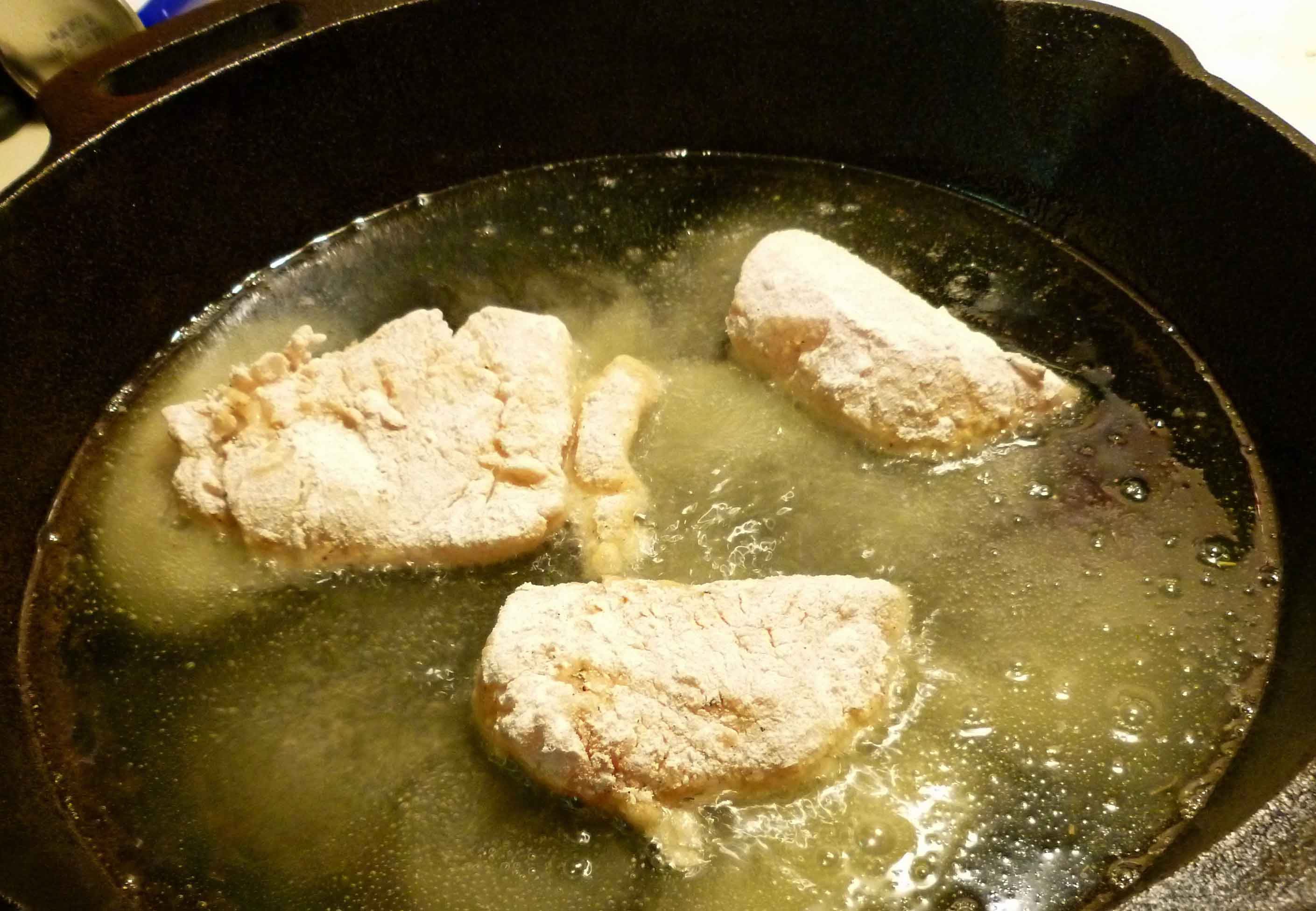
You should fry them, turning them once, until they are golden brown on each side, and so that the fish is just barely opaque, like this:
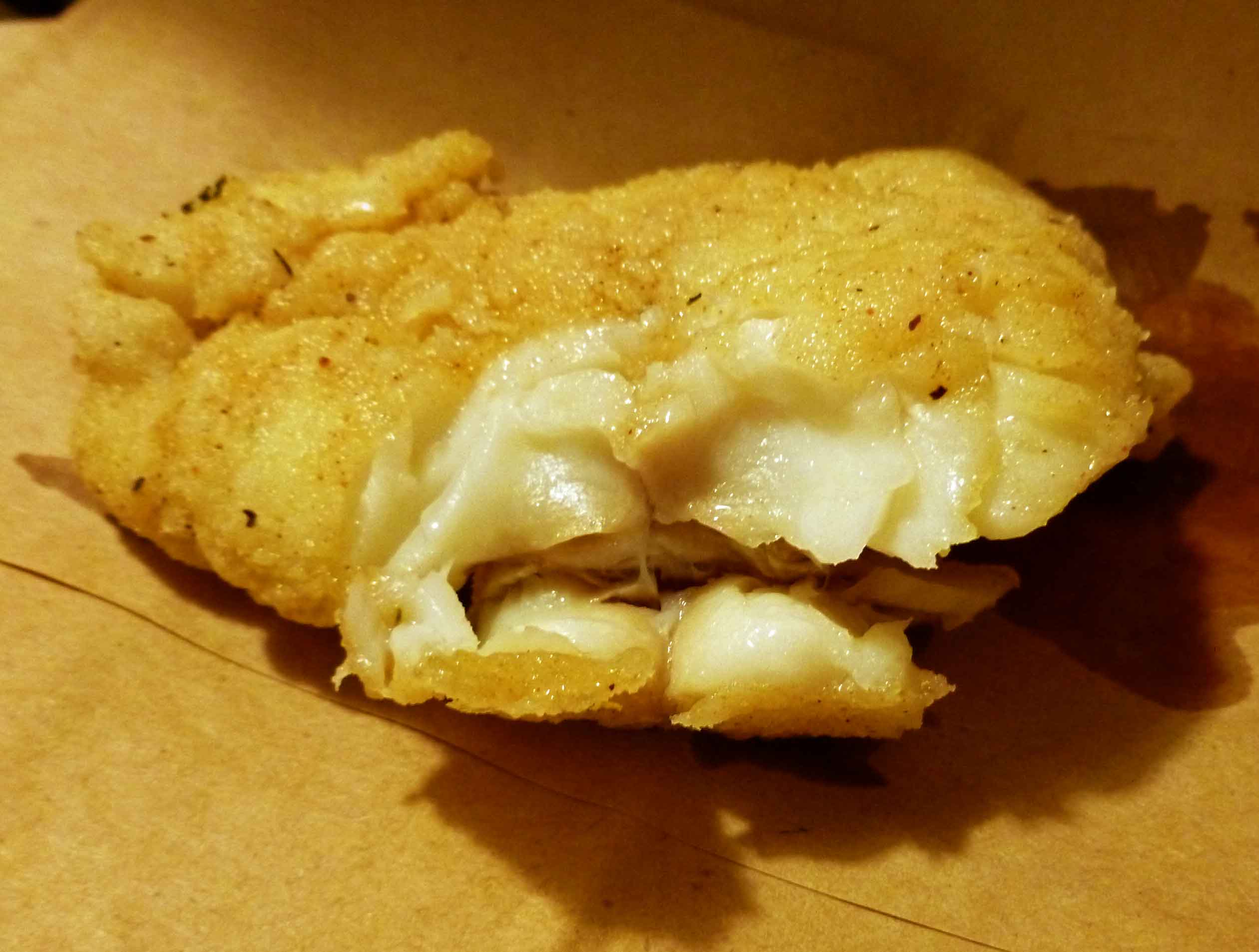
It should no longer be translucent, but it should not be a bright solid white either, and the haddock should just flake away in layers at a touch as shown above. If it’s overcooked, it won’t do that, it’ll be stiff at the touch and you’ll have to put effort into breaking off pieces with a fork. I’d tell you how many minutes per side, but that’s dependent on how thick your haddock piece is, so I can’t really do that. So again, it’s a practice makes perfect thing. Once the pieces are cooked, put them on a plate or cookie sheet lined with paper towels (this works best, I used paper lunch bags in the photo because I was out of paper towels), and let the oil drain off. (Also, you can take a tip from Alton Brown, as offered by Mary Kate, and put a cookie rack upside down on the paper towels, because it keeps the food off of the oil-soaked paper towels but it still drains the oil. I’ll definitely try this next time.)
Once all your haddock is fried, you can serve it with a little tartar sauce, which I make by mixing some Earth Balance Mindful Mayo, some relish, and a couple of drops of hot sauce. Enjoy!
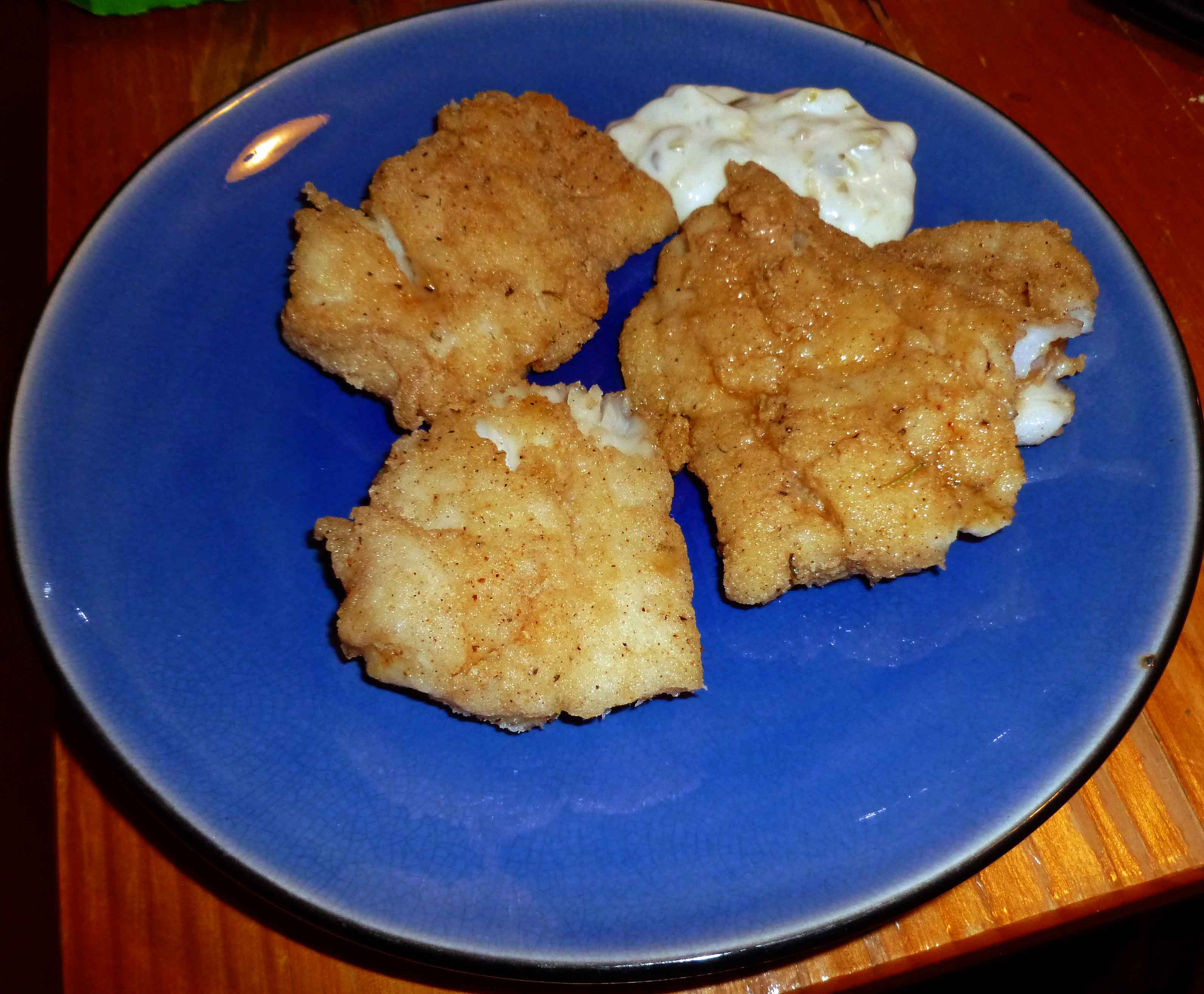
Leave a Reply to CortneyStanchfield Cancel reply